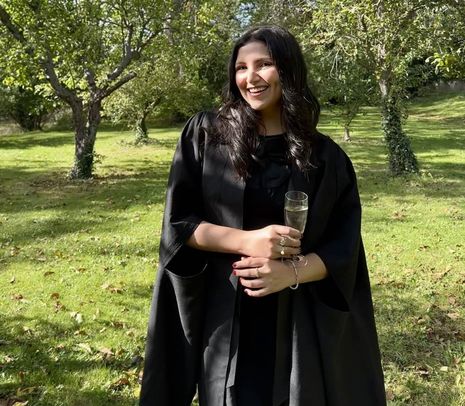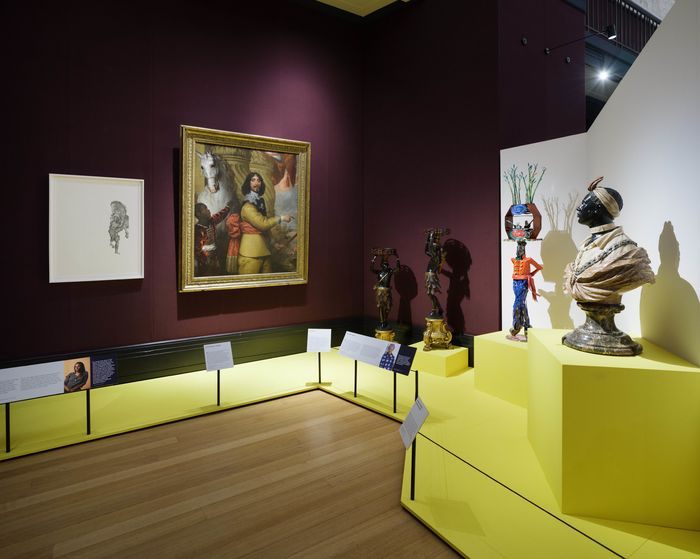Decolonisation, democratisation, and what goes on behind the buzzwords
Jude Jones speaks to Kiara Salazar, who takes to Instagram to cast light on Latin American art

Name as many Latin American artists as you can, quickly. I, for one, can get up to Frida Kahlo, Ana Mendieta, and Léonor Fini (the last thanks mostly to an off-chance Pinterest rabbit hole) before I begin to stutter. And with so much fervour still going around the (extremely important) idea that it’s time to decolonise art history, this lacuna when it comes to Latin American art – which I suspect extends beyond my personal anecdote – is getting more and more noticeable.
But, for some, the issue was glaring well before “decolonisation” became the art world’s latest buzzword du jour. One of these people is Kiara Salazar, a Master’s candidate in History of Art and Visual Culture at the University of Cambridge, who, with her Instagram account @artinlatinamerica, is curating a digital space in which to finally give these artists a voice, one post at a time.
Kiara’s background is international. Growing up in Peru – a country she characterises as having a slow-paced (but still growing) interest in contemporary art, where arts careers are still stereotyped as the fruitless paths of misguided bohemians – she completed her Bachelor’s degree at the ESCP Business School, giving her the chance to rotate between campuses in Paris, Turin, and Berlin, before settling in London for a Masters of Arts degree in Arts and Cultural Management. It was during this time, taking roles and courses at some of the biggest names in the art world (Christie’s, Tate, V&A), that Europe’s – and particularly England’s – Latin American blind spot really struck her.
“The goal is always more equitable representation,” she says, “but there’s still a lot to do.”
Thus began @artinlatinamerica, introduced to the world through a repost of a flower-vase still-life by Cuban painter René Portocarrero, whose heady strokes, paroxysmal tones, and explosive composition push the limits of ‘still-life’ to its unexpected extremes. Against this, she typed an understated, one-sentence caption: “René knows that when it comes to flowers, the more colours they have, the better.” This was the metaphorical seed from which her own flower bloomed. “@artinlatinamerica came very organically to me,” Kiara tells me in a warm voice, “as a result of me wanting to share all the research I was doing in one place, and the wish to give more visibility to artists that deserve a place in the art canon.”
That visibility came surprisingly quickly. Kiara recalls even early in the project’s life the unexpected traction her Instagram page accrued: from recurring story views from Artsy’s chief marketing officer to DM’s from art collectors and gallery directors whose names carry big weight. But her best encounters, she says, wearing a deservedly proud smile, “have always been with artists, I honestly think that’s always what makes me the happiest.” Among the more recognisable names Kiara has managed to chat to are Larissa de Souza, the Afro-Brazilian artist whose soft domestic portraits challenge the erasure of Black, working-class women in Brazilian art-historical narratives, and Bony Ramirez (who Kiara later tells me is one of her favourite artists working right now), the self-taught Dominican painter who makes muses of plantains, mosquito nets, coconuts, and bodegas in his thoughtful snapshots of Caribbean life.
“Social media is a weapon that can play ‘a crucial role in decolonising the art canon.’”
Social media is a way to connect with the world for Kiara, a way to talk to the artists she is working so hard to spotlight, but also a way to discuss change with the people who can institutionally affect it. More importantly however, both in Kiara’s words and in her hands, social media is a weapon that can play “a crucial role in decolonising the art canon.” It is a way of democratising the art world from the grassroots, she says, taking power out of the hands of those “very traditional institutions” – the galleries, museums, and auction houses that have made themselves “gatekeepers” of good taste and ‘fine’ art – and back into ours.
Gradually, this change is happening. Last year, White Cube Mason’s Yard, located within walking distance of Buckingham Palace and the British Museum, welcomed a solo exhibition by Mexican neo-Dadaist Gabriel Orozco, while Sadie Coles HQ, one of the UK’s most influential contemporary galleries, hosted a showcase of Brazilian painter Lucia Laguna’s eco-conscious abstracts poetically titled ‘Life is Only Possible Reinvented’, her first solo in the UK. Perhaps more emphatic still was the Tate Modern’s commissioning of the Chilean polymath Cecilia Vicuña in late 2022 to fill its iconic Turbine Hall with her multi-part installation ‘Brain Forest Quipu’, one of the very few times a Latin American artist has been afforded such mainstream hyper-visibility in the British art circuit.
But this change needs to expand beyond the museums and the galleries, too. This is the point that Kiara goes out of her way to emphasise. Talking about her studies at Cambridge this year, she tells me she was pleasantly surprised to be able to take a topic on Mexican muralism, the state-funded art movement which sought to reshape the country’s identity in the wake of the Mexican Revolution (1910-1920). “I don’t think it would have been like this five years ago,” she confides, “I would like to see more efforts online, but also offline […] the history of art curriculums, those are really really key to changing the arts industry.”
So, what work can we do on the individual level? “I believe that small actions can go a long way,” Kiara tells me, “engage with social media platforms, because it allows you to explore and discover many artists. And if you like a particular artist, remember not only to follow them but also interact with their content when you can.” Take to the classrooms and the institutions too, she says: if you’re reading History of Art at university, try to highlight the contributions made by and being made by Latin American artists, and keep an eye out for art exhibitions showcasing Latin American art – go to them whenever you can to show institutions that people want to see more inclusive and expansive narratives.
This is where people like Kiara are important. As well as using her platform to promote new artists, her newly launched Substack newsletter helpfully shows people when and where Latin American artists are being displayed in the UK and beyond. Just scrolling through her account – meandering with eclectic cohesion from painting to sculpture to installation to photography, taken from all corners of Latin America – and just talking with her for half an hour, I already feel more exposed to, more excited about, Latin American art than any gallery visit or any university lecture has ever made me. This is both a testament to the power of her work, and the distance that we have left to go. “The goal is always more equitable representation,” she says, “but there’s still a lot to do.”
 Comment / Cambridge is a masterclass in nostalgia11 March 2025
Comment / Cambridge is a masterclass in nostalgia11 March 2025 News / Vet School saved?7 March 2025
News / Vet School saved?7 March 2025 News / University Library electronic legal deposit systems restored12 March 2025
News / University Library electronic legal deposit systems restored12 March 2025 News / Pro-Palestine supporters urge Cambridge to end injunction bid11 March 2025
News / Pro-Palestine supporters urge Cambridge to end injunction bid11 March 2025 News / Caius threatened with legal action after accommodation fiasco7 March 2025
News / Caius threatened with legal action after accommodation fiasco7 March 2025





